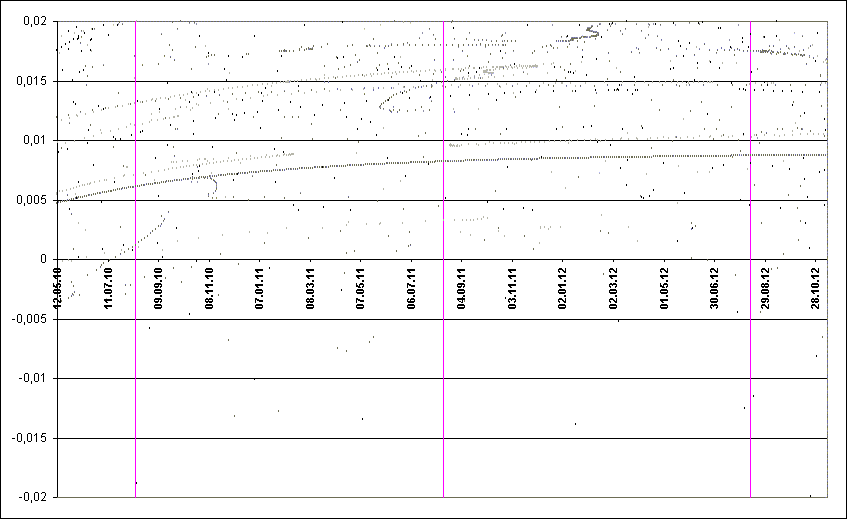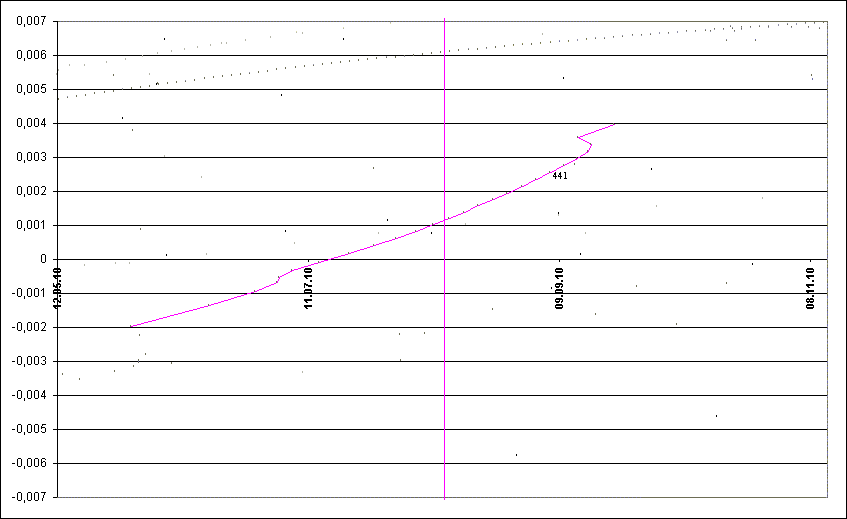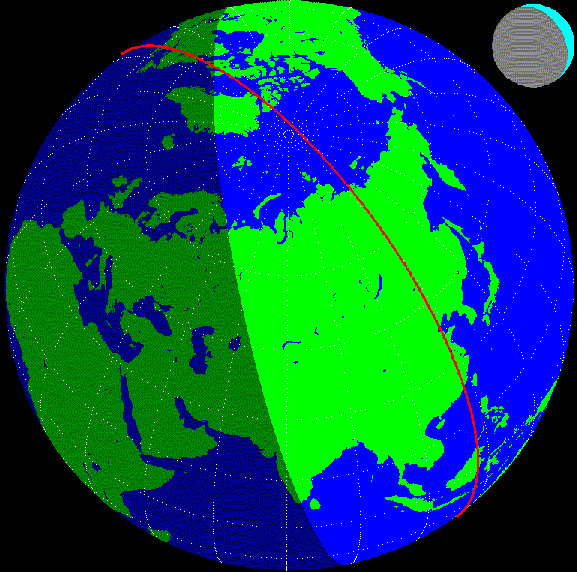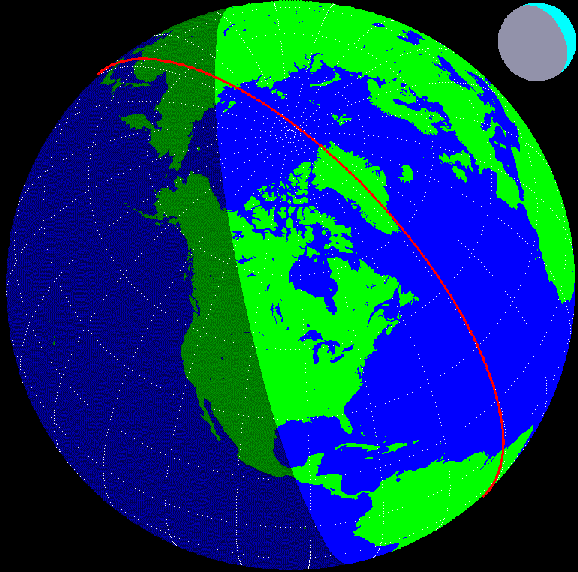Perseids 2010: prediction of activity
to the list of predictions

Fig. 1. Space-temporal projection of Perseid trails parts onto their minimal distance passages dirung the period (correspondence between colours of the particles and their ejection velocities can be seen here).

Fig. 2. Detailed space-temporal projection of Perseid trails parts onto their minimal distance passages in 2010 (correspondence between colours of the particles and their ejection velocities can be seen here).
In 2010 the background Perseid activity is still unfluenced by perturbation from Saturn, though in much lesser degree than in 2009, so it should be enhanced a little comparing to usual years. Maximum background activity is expected to reach ZHR=110-120. Besides that, as shown in the Fig. 2, the Earth is expected to encounter a quite dense 441 trail fragment. The parameters of the encounter: rD-rE=0.00120 AU, Vej=29.03 m/s, fM(fMD)=-0.046, sol.long.=140.491°, maximum time = 13.08.2010 12:02 UT, ZHRex=10-15 (in addition to background activity). So far this encounter is not very close, ejection velocity of meteor particles is quite high, so despite high density of the trail, we expect quite moderate activity outburst - ZHR=10-15 in addtition to ongoing background activity. However the time of this outburst is quite far from background maximum, so it will be easier to distinguish it from the background.

Fig. 3. The Earth as seen from coming Perseid meteors (Radiant: (RA=48°, Dec=+58°) during the background maximum at 0:45 UT 13 August. Red line shows the border of hemisphere where the Moon is above horizon (it is shown with in the corner of the Fig. 3 according to its phase).
As shown on the Fig. 3, in 2010 the background maximum will be observed best in Eurasia and in the northern part of Africa. Considering that shower maximum is quite broad and lasts for several hours, the eastern part of Eurasia (excluding perhaprs regions close the coast of the Pacific ocean) will also be able to see activity levels close to maximum ones. The waxing Moon crescent won't create any significant troubles for observers.

Fig. 3. The Earth as seen from coming Perseid meteors (Radiant: (RA=48°, Dec=+58°) during the expected time of outburst from 441 trail at 12:02 UT 13 August. Red line shows the border of hemisphere where the Moon is above horizon (it is shown with in the corner of the Fig. 4 according to its phase).
As shown on the Fig. 3, the best conditions for this outburst observation will be on the western coast of North America, on Kamchatsk peninsula and adjacent territories in Eurasia, and in the north-easthern part of the Pacific ocean. This peak should be notably sharper than background maximum, but when it occurs earlier than predicted, the observers in more eastern parts of North America would have possibility to see it or at least activity rising towards that peak.
Ссылки
1. "Comet's dust 2.0" program by S. Shanov and S. Dubrovsky. [Used for orbital computations.]
2. Information from Gary W. Kronk's page http://www.maa.agleia.de
3. Lyytinen E, van Flandern T. "Predicting the strength of Leonid outbursts", 2000, Icarus, P. 158-160.
4. Jenniskens P. Meteor showers and their parent comets, 2006, 780 p.
Ссылки
1. "Comet's dust 2.0" program by S. Shanov and S. Dubrovsky. [Used for orbital computations.]
2. Information from Gary W. Kronk's page http://www.maa.agleia.de
3. Lyytinen E, van Flandern T. "Predicting the strength of Leonid outbursts", 2000, Icarus, P. 158-160.
4. Jenniskens P. Meteor showers and their parent comets, 2006, 780 p.